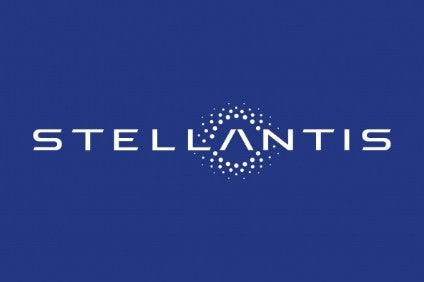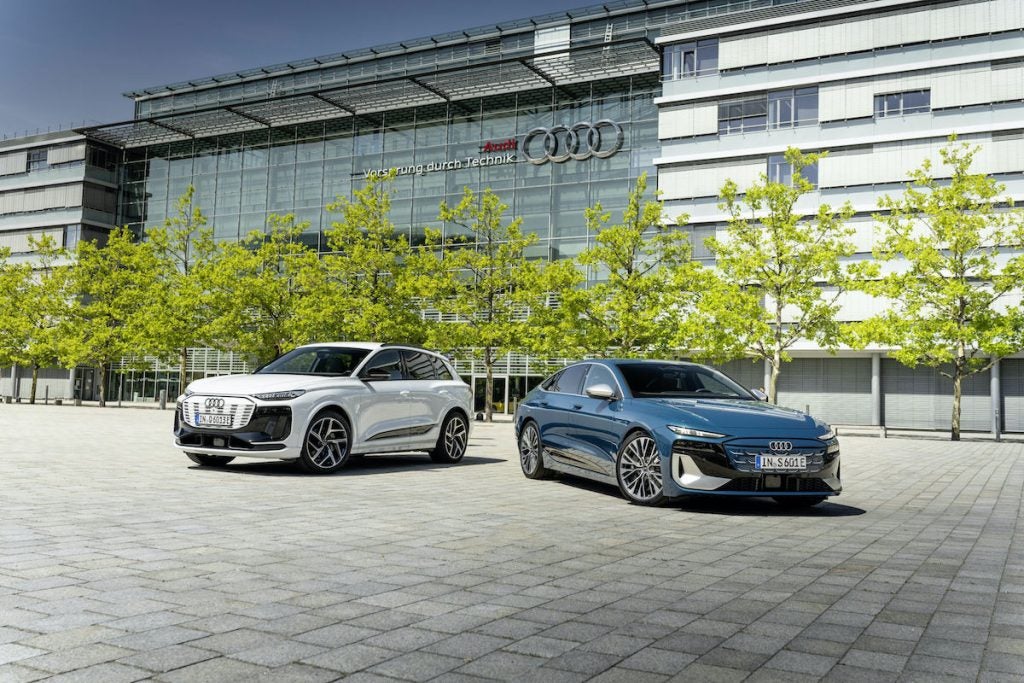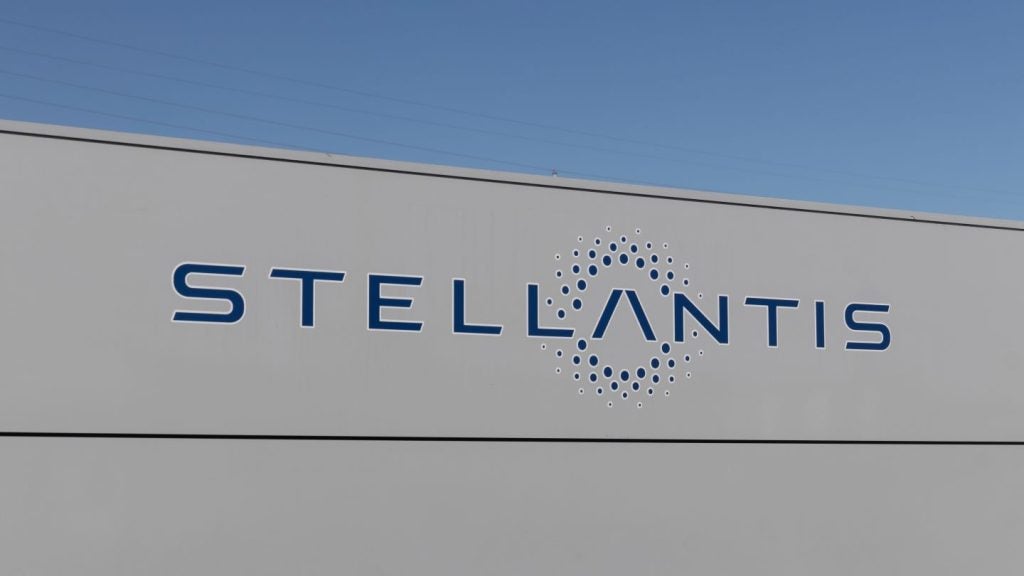 All-glass roofs, extra cargo capacity, and multi-functionality in a single vehicle is moving from the auto show floor to the show room. Webasto‘s welcome concept vehicle shows automakers how easy it is to add these features by lightly modifying their body structures and adding a module or three.
All-glass roofs, extra cargo capacity, and multi-functionality in a single vehicle is moving from the auto show floor to the show room. Webasto‘s welcome concept vehicle shows automakers how easy it is to add these features by lightly modifying their body structures and adding a module or three.
It’s not unusual these days for a supplier to build a unique concept vehicle to show off its wares. That way an OEM isn’t distracted from impartially evaluating the technology by the fact that it’s part of a competitor’s vehicle. However, building a concept on an employee’s personal car–and one with 140,000 kilometers on the odometer to boot–is unusual, almost as unusual as having the supplier’s director of Group Research and Development set pen to paper and draw the interior and exterior shapes. But then Germany’s Webasto is an unusual company. Not only is the $1-billion (sales) company still family owned, its goal is to supply its customers with roof modules that can fit to most any vehicle modules ranging from a solid roof panel to a reconfigureable glass sunroof.
According to Brett Healy, v.p. of Sales, Marketing and Strategic Development for Webasto Roof Systems, Inc. (Rochester Hills, MI), “One standard body-in-white can be fitted with a number of roof options supplied as modules to the assembly line.” To make this work, the body structure must be designed so that the A- and C-pillars are tied together from side to side, the roof panel section extends from the windshield to rear window between the upper side rails, and lower lap joints are integrated into the upper structure. Fully trimmed and operational modules–solid, solid with integral sunroof, glass with sliding panel(s), multiple-piece glass sunroof, etc.–contain the upper lap joints along which structural adhesive is placed to bond the panel to the vehicle structure.
Mercedes uses this design on its C-Class Coupe and the new E-Class fitted with the “Panorama” roof. It gives the impression of an all-glass roof, and includes a large moveable front sunroof panel and integrated power sunshade. Fiat uses a variant of this design on its mid-size Stilo. In this application, a multi-piece glass unit is encapsulated by a “halo” steel roof panel. The separate glass panels–which close tightly against bulb seals for weather protection–open for venting, and slide backward to create a large opening. Webasto calls this its “Lamella” system. But it is the design found on the Welcome concept car that shows just how far the company is willing to take the modular roof idea.
“The Welcome concept creates multiple vehicles from one model,” says Francois De Gaillard, Webasto’s director of Group Research and Development, and the vehicle’s designer. “It can be transformed into a semi-convertible, a station wagon, or a pickup without having to do anything more than press a switch or two.” A large glass panel covers the passenger compartment, and can be popped open at the rear, or retracted over the rear deck. (A roof deflector above the A- and B-pillar cross-car beams initiates turbulent air flow in order to reduce buffeting.) Close the front section, however, and the Welcome can change quickly from a five-passenger sedan to a load hauler.
“There is an electronic interlock that prevents the rear glass from sliding forward when the front panel is open, or the front panel from venting or sliding open when the rear panel is forward,” says De Gaillard. This feature minimizes both the track and glass lift height, allows both units to use the same track, and prevents the front section from impinging upon the rear opening. Said port extends from just aft of the C-pillar to the end of the vehicle, and makes it possible to carry tall or bulky items. Lowering the tailgate glass and dropping the rear seat opens the area even farther, while opening the gate turns the Welcome into a pickup.
How well do you really know your competitors?
Access the most comprehensive Company Profiles on the market, powered by GlobalData. Save hours of research. Gain competitive edge.

Thank you!
Your download email will arrive shortly
Not ready to buy yet? Download a free sample
We are confident about the unique quality of our Company Profiles. However, we want you to make the most beneficial decision for your business, so we offer a free sample that you can download by submitting the below form
By GlobalData“We integrated an electric partition window into the rear seats,” says De Gaillard, “to divide the passenger and load areas, and reduce the noise entering the cabin when the rear is open.” The window must be lowered to fold the rear seats forward, and two small side windows–much like those found on either side of the glass divider in a limousine–are fixed to a modified bulkhead ring.
|
Individual aluminum slats bonded to fabric form a rigid luggage cover that can be used to divide the load area into upper and lower sections. When it is deployed, the cover is bowed slightly in its channel which stiffens it enough to carry 11 lb. This curvature also directs rain water to drain tubes located in the side panels. Removing the tension allows the slats to retract–electrically, of course–into the wall that divides the passenger and load compartments. About the only manual feature in the vehicle are the frames that slide out from either side of the load compartment, and fasten together to create a load extender that runs to the end of the lowered tailgate.
As if this isn’t enough, the load floor and tailgate contain motorized belts to ease loading and unloading. “It’s the same technology you see used in luggage carousels at airports,” says Healy. It can be included as part of a comprehensive package, or as an option.
Which brings us to the question of feasibility. “We can supply the rear roof panel and the Panorama roof now,” says Healy. “The rest are in development and could be supplied very quickly.” The entire package showcased on the Welcome would be shipped in three modules: the roof, the load area and sliding upper glass section, and the folding seat with its integral retracting glass divider. “Everything would arrive on the OEM’s doorstep pre-tested, trimmed, and ready for assembly,” says Healy, “and include items like the drainage system.” By mixing and matching modules, automakers could create opportunities for greater differentiation between models without forcing customers into an either/or decision.
It remains to be seen who will be the first to adopt the Welcome’s chameleon-like modules, or how much buyers will be charged for their inclusion. Judging from the increasing number of auto show concept vehicles boasting similar items, it won’t be long before those questions are answered.







